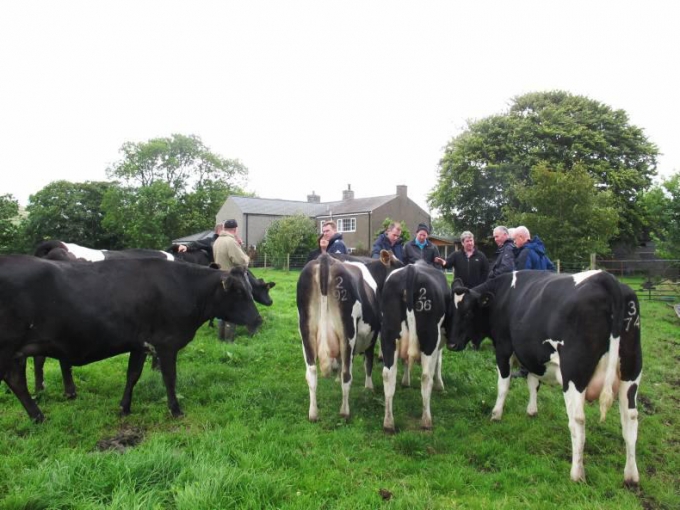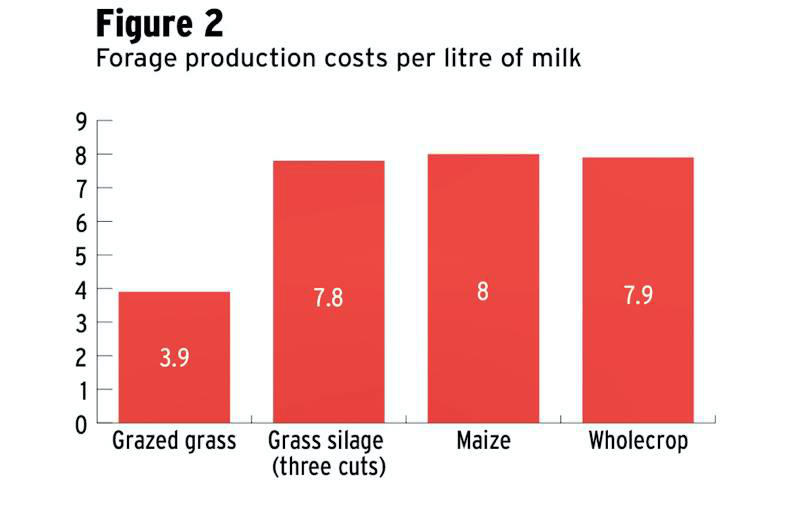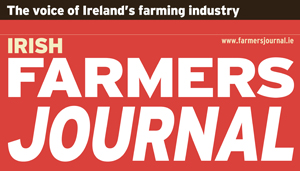Taking full advantage of grass resource
8th August 2015

Farm visit to Wales focused on both grass production and utilisation as areas to improve farm profitability.
Improving resource utilisation on farm is a key objective of the Dairylink Ireland project, and this was the main topic of discussion on the group’s recent study tour to Wales.
Although the group returned to very wet and difficult conditions on their own farms, the trip was a success and highlighted a number of key areas for all members to focus on to help improve their own businesses.
All of the farms visited were located in north Wales and had been involved in a project to improve the Welsh dairy supply chain which focused on both grass production and utilisation as areas to improve farm profitability. Some of the key discussion points coming out of the visit for the Dairylink group are discussed below.
Value of grass
Similar to Ireland, grass has proven to be a relatively cheap feed on the Welsh project farms at £97/tonne of dry matter. This was the average full production cost calculated across the 12 project farms and included establishment, growing, harvesting and overhead costs such as land rent and storage. When compared to other forages like maize, wholecrop and grass silage, grazed grass was shown to be over 25% cheaper (see graph).

Furthermore, when the production cost for each forage was expressed in terms of the cost to produce a litre of milk, grazed grass worked out at half the cost of the other forages. This was largely because of the deficiency in energy and protein in the other forages that had to be supplemented in order to reach the standard of the grazed grass (see Figure 2).
Achieving value from grass is not just the focus of block-calving low-input herds. All herds have the potential to exploit well-managed grass and improve herd profitability. Many herds with yields of up to 9,000 litres/cow achieve a proportion of their yield from forage, with a significant share of this from grazing.
With the right infrastructure and effective management, grazed grass can replace more expensive conserved forages with no compromise in cow performance, something the Dairylink group was keen to discuss throughout the trip.
One clear message from the Welsh project was the range in production cost of grass across all of the project farms. Simply growing grass well does not mean it is a cheap and cost-effective feed. It is critical to also utilise the grass efficiently.
The Welsh project concluded that the average production cost of grazed grass was £97/t DM across the farms, with an average grass yield of 10.9t DM/ha grown. However, the range of growth and subsequent production cost within the project farms from the worst paddocks to the best paddocks was £110/t DM. The worst 10% of paddocks recorded grass growth of 6.9t DM/ha and had a production cost of £150/t DM, while the best 10% of paddocks in the project recorded grass growth of 15.2t DM/ha and a production cost of £40/t DM.
The key point illustrated here is that managing grass to optimise yield and quality can cost more, but the higher cost is more than compensated by the extra yield and lower cost per tonne.
Measure to manage
Effective grass budgeting and monitoring has helped the farmers involved in the Welsh “Grass Value” project improve grass utilisation and help ensure grass is grazed at the optimum time.
Similar to farmers in the Dairylink group, the main challenge on all the farms visited proved to be managing the uneven grass supply throughout the year. This highlighted the importance of monitoring grass growth on the farm to the project farmers who could use this information to adjust herd and grassland management as appropriate.
All the farms involved in the Welsh project measured grass on a weekly basis and updated an online grass budgeting tool which generated a grass wedge. The wedge is a simple tool used to interpret and present the weekly grass measurement information and allows key decisions to be made regarding grass supply relative to herd demand.
Linking grass value to herd profitability
The detailed study conducted on the twelve Welsh farms clearly shows that focusing on producing the optimum dry matter yield of grass per hectare, combined with effective grassland management, results in high levels of grass utilisation and milk from forage.
The consequence of improving dry matter yield and utilisation is the lowering of overall farm feed costs and the subsequent maximisation of net margins. There was a clear trend from the study indicating that herds that grew more grass and produced more milk from forage per hectare had a higher net margin per hectare.
Take-home message
From a grazing perspective, some of the key messages the Dairylink farmers took from the Welsh visit include:
- Weekly measurement of grass growth is critical to allow effective grass management throughout the grazing season.
- A grazing plan for turnout, mid-season and autumn grazing is critical to optimise grass management.
- Understanding the grass plant and its growth stages is important for maximising grass growth and quality.
- Targeting farm investment on areas to improve grass growth and utilisation is key. Such areas include reseeding, soil nutrient management, and infrastructure including laneways and fencing.
This article has been reproduced with the kind permission of the Irish Farmers Journal. Please click on the below Irish Farmers Journal logo to be brought to additional dairy articles
